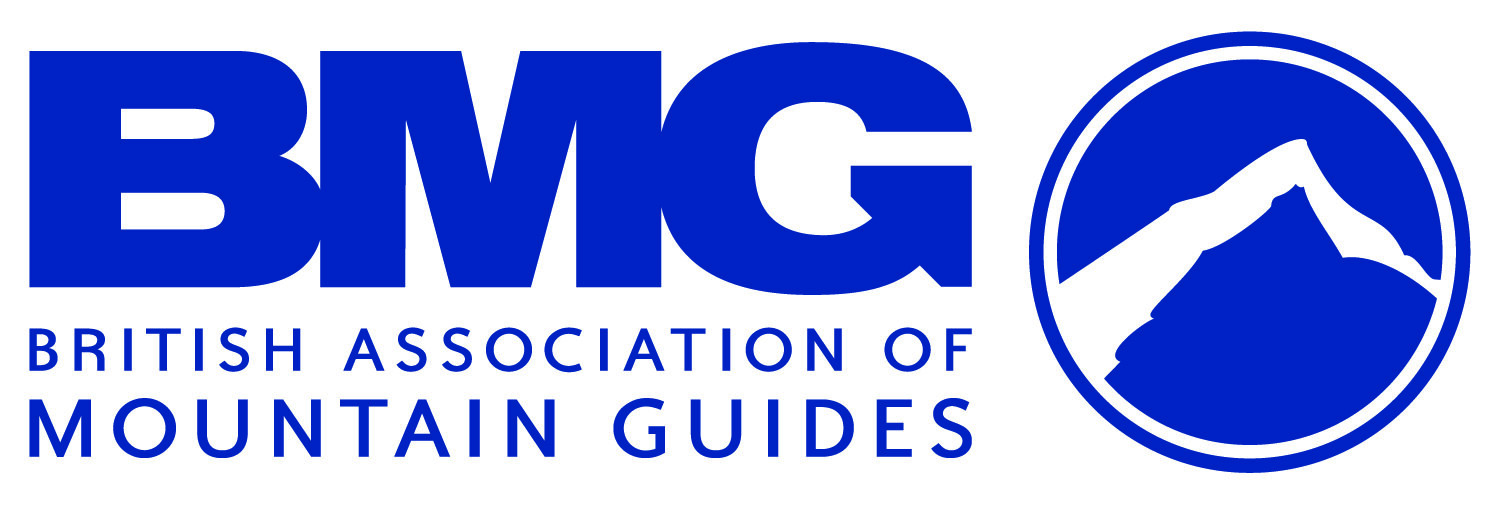6 Quick Fixes To Improve Your Climbing
/GUEST POST by CHRIS WITTER
Training for rock climbing is de rigueur these days, but hanging on your fingertips from a 15mm edge seems too much like hard work to me. So, for all those with bigger imaginations than biceps, here are six quick fixes that’ll have you effortlessly dancing up extremes in no time.
Organising climbing gear. Photo credit: Chris Witter
1. Clean your shoes
It goes without saying that choosing a quality pair of snug, well-fitting climbing shoes is important. Personally, I like stiff, flat shoes for trad that are just tight enough that I can pull with my toes. But, I often wonder why people bother, as time after time I see partners and other climbers at the crag setting off with dirty, wet or even muddy shoes. Stop it!
Apart from dirty shoes polishing routes, there’s nothing worse for footwork than grass and dust between your rubber and the rock. So, take a mat to the crag that you can stand on before setting off. Don’t just wipe the mud off, either. Clean all the dirt, then spit on your hand (or use a little water) and give the front of the sole a good rub clean with your hand until the rubber is black and sticky. Sticky rubber is the materialisation of confidence.
Every time you set off on a route you want to give this sort of attention to your shoes. Do this and you’ll find it much easier to make that delicate rockover or commit to running it out on the thin slab above.
2. Rack up well
Another area to avoid being sloppy is your rack. Nothing is more likely to ruin your onsight than faffing with gear in a strenuous position. But, nonetheless, people set off with their belay device still on their belay loop, their cams behind their trainers, their slings in a tangle, the HMS they won’t need until the belay on their front loop and all their quickdraws out of reach on their back loop or else clipped to their harness by the rope end.
If you get into the habit of being neat and methodical with your racking, even when you’re seconding, things will go smoother and quicker – and you’ll look less like a punter. If you develop a routine that works for you, you will know where things are without looking. Another little tip is to rack wires on coloured carabiners, like cams, so you can tell your small and your medium nuts apart at a glance.
It goes without saying that this is also a good time to consider which gear you are able to leave in your sack – if your chosen pitch is an obvious handcrack, you probably won’t be needing those microwires or that XXL cam. You may even be able to offload your 1.5kg approach shoes onto your second, if you ask them nicely.
Climbing on Pavey Ark. Photo credt: Chris Ensoll
3. Coil your rope immaculately
To be honest, I’m as guilty as the next person of rushing things and ending up with sloppy coils – but the net result of this is often losing time to rope-tangling faff. Over the course of a day, this is the difference between slick teams that climb fifteen pitches and slow teams that only get in four. Not only does it lose you climbing time, it also undermines your focus and confidence to have to spend fifteen minutes wrestling with your rope before you set off. Apart from saving time, poorly coiled ropes can be a serious hazard. I’ve seen many teams descending steep ground with loops of rope brushing their ankles – ready to trip over, exactly where a stumble could be fatal.
My current preferred method is to take ‘lap coils’, leaving several metres of rope, and then to wind the rope around the coils in an upward manner, avoiding twists. I then take a bight through the coils and bring this bite loop back down over the coils, cinching it tight. Whichever method you use, aim to make it neat every time.
4. RTBGB!
The majority of these tips are very simple issues of good preparation – and this one is no different: read the b***** guidebook!
At an unfamiliar and complex crag, reading the guidebook with care – and perhaps even doing some online research - will save you time and energy on and off the rock. If you know where you’re going the day before you set out, there’s no excuse.
Research the parking to avoid stress and angry landowners. Research the approach, to avoid getting lost or taking a more difficult route than necessary. Find out about bird bans before you reach the crag – not after. Absorb information about the routes beforehand, so that you have a focused idea of what you want to climb. Make sure this suits your partners, and perhaps even imagine a rough schedule, with varied options – allowing you to warm up, get your goal climbs done and enjoy a victory lap before the pub. This saves your partner having to wait for you to mull through the guidebook as though it were a lunch menu, before you can get climbing. Get a bit of an understanding of which routes are sandbags, which routes are bold or have fiddly gear, which routes have loose rock – and, know how you’re getting back down again, safely and efficiently. On this latter point, sometimes abseiling will be the key to getting more done – especially if several routes finish at the same place.
On multipitch routes or long pitches where you can’t see the whole route from the ground, you also need to familiarise yourself with the features you expect to encounter. One of the scariest things that can occur during an onsight lead is getting to a point where you are above gear and no longer sure which way to go. Some routes involve improbable situations – finding the good handholds that allow you to tackle the overhang head-on, traversing around an arete into a new groove line, or moving slightly left or right on a seemingly-blank slab to uncover hidden micro-features. Make sure you know where you’re going before you set off and you’ll be able to climb with more confidence and less drama.
There’s a limit to every rule, though: sometimes guidebooks are wrong. More important than studying the guidebook itself is familiarising yourself with rock features and the logic of route-finding through complex terrain. If you really work on developing the skill of reading rock features, you’ll be able to follow your nose even when the editor wrote “left” instead of “right” – or when you deliberately launch out into uncharted territory.
Complex route finding. Photo credit: Ben Cannon
5. Pacing
Once you understand the line of a route well, you should be able to break it down into sections: this bit is slabby, that bit is steep, there’s the crux, there’s a rest. This is where pacing comes in. The usual metaphor is that of a car, changing up and down the gears. In my mind, it’s about knowing when to apply self-restraint and when to let go.
When I started climbing, I wanted gear always to be above my head and would place gear every metre. When this wasn’t possible, it would stress me out. Perhaps this is a sensible approach for a novice, but once you are confident in your placements, it’s important to use gear strategically rather than to rely on it as though it were a crutch. Otherwise, you’re climbing to place gear rather than placing to gear to climb, and you’ll progress up the rock at a limp.
When you find yourself confronting more difficult ground, you’re going to need to be efficient. Find a position that is comfortable, where you can rest. Look around for holds and try to step back from the rock into a bridged position. Get yourself some gear – perhaps even two or three solid pieces of gear if possible, though keeping in mind the direction you’re planning to move off in. Look ahead for the route you expect to take, paying particular attention to identifying where you might next be able to rest and place gear. If the ground is steep, pay extra attention to locating feet, as they can prove difficult to spot from above – adding it dot of chalk if necessary, to help you re-find them. Finally, check in with yourself, your breathing, your energy levels, your fears – and summon the necessary commitment. In this way, you deal with everything ahead of time until only the climbing remains. Now you can let go, climbing with full focus and commitment to the next rest or vital gear placement.
6. Relax
This brings us to the final fix, which is to learn to relax. There are places in climbing where relaxing too much creates a significant risk of injury or death: not concentrating when you tie in or belay; slipping at the top of a route after untying or during the descent; setting up an abseil when you’re tired. But, when you’re halfway up a pitch, engaged in a sustained section of thin wall climbing, you really need to learn to chill out.
I’m being facetious, of course, but fear consumes energy, leads to overgripping, and it stops you from thinking strategically. I know this because I’ve been there time and time again: one day, a route can seem utterly desperate – far beyond your currently levels of strength and stamina. The next day, with less fear, relaxing your grip, lowering your heels, allowing yourself to weight your feet properly, it becomes compellingly possible.
Partners are important here, too. It’s vitally important, of course, that you are able to really trust your partner to belay well. But, beyond that, you’ll climb your best when you’re with people whose company you enjoy, with a compatible approach, and a positive attitude. If you climb with someone who is consistently scared, you’ll probably find yourself climbing in a timid manner, saving goal climbs for another day or feeling spooked where you expected to feel comfortable. If you climb with someone who is having fun and who is upbeat even in the face of a challenge, it’s more likely you’ll enjoy yourself too – even when things are challenging.
Relaxing on a route
Just add water and stir…
Trad climbing is about being prepared, developing experience and thinking strategically – but it’s also about remembering to have fun, letting go and allowing yourself to climb. These tips aren’t really ‘instant’ fixes, but it’s important to realise that improving your trad climbing is often about paying attention to detail, correcting bad habits or working on your thought process and broader approach, rather than being about endless fingerboard and pull-up regimes.
What about you?
Please share any other useful nuggets you have in the comments below! We’re looking forward to hearing from you.
About the author
Raised on brown bread in the flat lands of the Fens, Chris Witter moved to Lancaster in 2005 to study English Literature and gradually fell in love with the Cumbrian fells. He has been trad climbing since 2015 and is an avid reader of climbing history. He also enjoys bouldering, sport climbing, winter mountaineering, fell running and most other good excuses to be outside. He holds the Rock Climbing Instructor qualification and is planning to work toward the Mountaineering & Climbing Instructor award, but currently moonlights in various university teaching and administrative roles to fund his climbing gear habit. He is a mentee on our Chris Ensoll Mountain Mentor programme.
Are you an aspirant blogger?
Are you passionate about the mountains? Do you have a particular interest in a mountain-related subject? We’d love to hear from you if you would like to write a guest post for us - send us an email!








